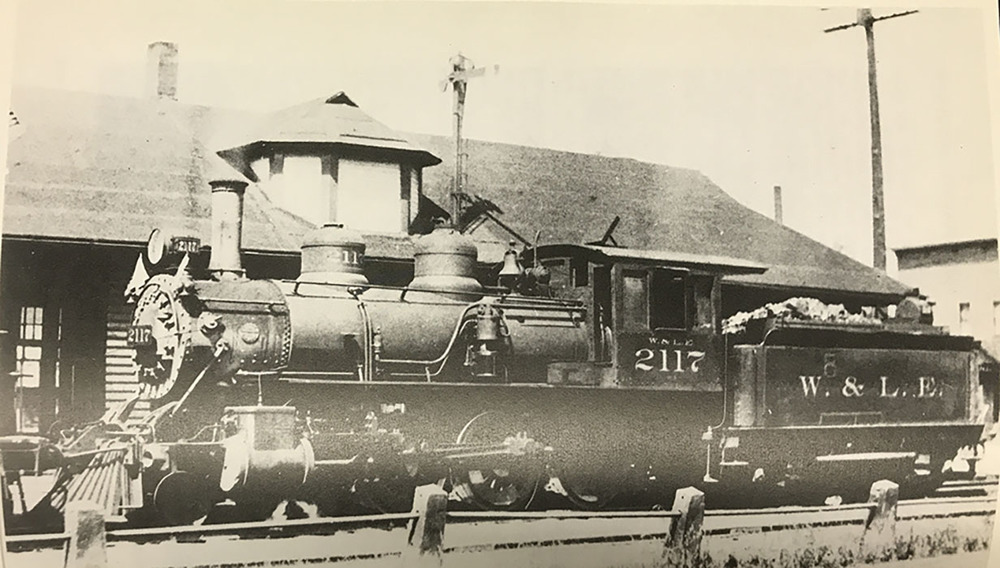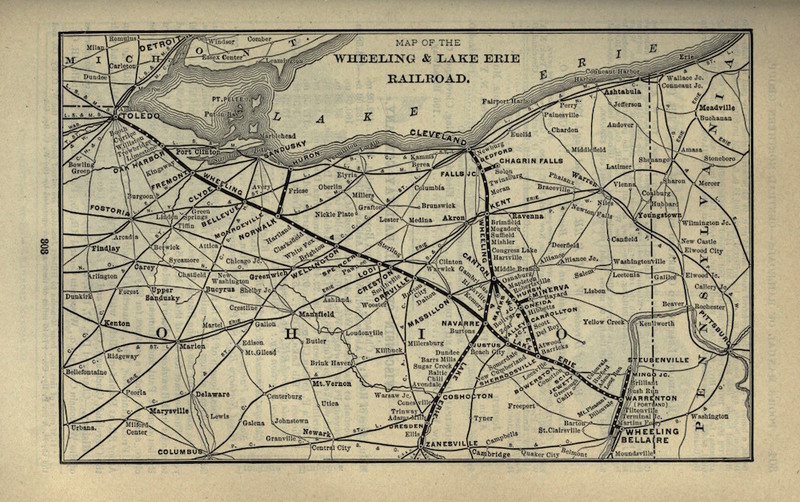Wheeling and Lake Erie Railway Depot

BHS C.C+S. R.R. MS83 2001 Brooks Locomotive Works
Did you know that Abraham Lincoln visited Bedford, Ohio, via train? In February of 1861, the president-elect journeyed through Bedford on the Cleveland and Pittsburgh Railroad (C&P) while on his way from Springfield, Illinois, his hometown, to Washington for his inauguration. The train carried Lincoln, his wife, and their three sons. As the train passed by the C&P depot, he waved from the platform of the train to welcoming residents. A few years later, in 1865, Lincoln made his way to his hometown from the Capitol, but this time he did not get out and wave. His funeral train made the 1,700-mile voyage back to Springfield, stopping in major cities like Baltimore and Cleveland for Americans to pay their respects to the fallen president.
The railroad industry brought many individuals to Bedford, including Abraham Lincoln, James A. Garfield, William McKinley, Warren G. Harding, and Herbert Hoover; these men and their families rode the C&P, which stopped in Bedford on the way to the developing city of Cleveland. Trains and railroads became an important industry, fueling the economic growth of many small suburbs, like Bedford, which is located about 12 miles southeast of Cleveland.
The Wheeling and Lake Erie Depot is the last standing historic railroad depot in Bedford. The Connotton Valley Railroad Company (bought by the Wheeling and Lake Erie Railway Company in 1899) built the depot in 1882 when it decided to expand its tracks through Bedford’s Public Square. The depot’s location in the Public Square, next to the 1874 Town Hall building was significant as it was at the center of the town’s economic activities. Throughout the years, this depot has fueled economic activity and development in Bedford.
The town began to adopt the role of a suburb during the time of “railroadization,” which was only reinforced with the 1882 opening of the Connotton Valley Railroad (CV) Depot. Trains and interurban streetcars, like the Akron, Bedford, and Cleveland (AB&C), created a direct route to Cleveland and areas of southern Ohio. Frequent schedules for passenger trains between Bedford and Cleveland were used to entice city dwellers to the suburbs. The Plain Dealer carried an advertisement for Bedford, claiming it to be the “most beautifully situated of all Cleveland’s suburbs—the healthiest town in Ohio to make a home—only twelve miles from the [Cleveland] Public Square, with the best of railroad facilities.” In addition to passengers, the railroads brought freight, including coal, to the town. The construction and subsequent use of this depot, as well as the C&P Depot, brought developers and new industries, like the Franklin Oil and Gas Co., to the developing area.
The depot is a characteristic late 19th century small town train station, transporting passengers and freight. Before being donated to the city, the depot had been used as storage space and offices from the train depot’s last use as a stop for passenger trains in July 16, 1938, to its donation in 1986. It furthermore embodies the evolution of railway companies. Built by the Connotton Valley Railroad, the Wheeling and Lake Erie Railway Company (WL&E), chartered to the Nickel Plate Road from December 1949 to 1964, and then served the Norfolk and Western Railway following yet another merger. In 1982, the Norfolk and Western became the Norfolk Southern Railway. The original lines of the WL&E were sold in June 1990 to a new railroad, which adopted the original name (WL&E) and still runs today.
The Norfolk Southern Railway Company, which owned the depot after many mergers, donated the building, 104 years old at that time, to the city in 1986. The City of Bedford, along with the help of the Bedford Historical Society and many of Bedford’s residents, began the restoration of the railway depot in 1986, completing it in 1989. The historical society intended it to be an annex of the museum, displaying railroad mementos from years of the depot’s use. For this project, the historical society and city relied on $85,000 in state grants, including the State of Ohio’s historic preservation grant, $12,000 in federal funding, and donations. Unlike other historic preservation sites, this railway depot was not restored to its original 1882 style, but to the 1920s era passenger station. Bedford’s Wheeling and Lake Erie Railway Depot has been on the National Register of Historic Places since 2004. Work has been continually done on the square since the 1980s to preserve the city’s history with the intention of furthering memories of the city’s past and creating a central cultural feature in Bedford.
Images

BHS C.C+S. R.R. MS83 2001 Brooks Locomotive Works










MS#141 BHS Restoration Works Date: July 4, 1986





